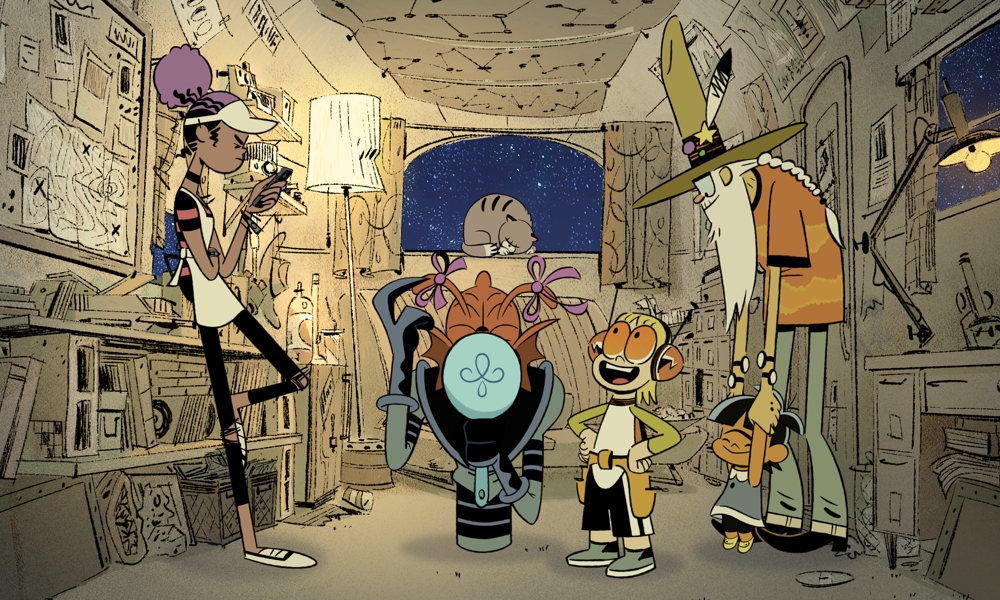***This interview originally appeared in the February ’21 issue of Animation Magazine (No. 307)***
The name Craig McCracken evokes deep feelings of admiration and respect in animation circles. The friendly toon auteur, who is turning 50 this March, was the creative force behind the popular animated shows The Powerpuff Girls and Foster’s Home for Imaginary Friends at Cartoon Network and Wander Over Yonder at Disney Channel. McCracken, a talented Cal Arts alum who got his first big breaks working on 2 Stupid Dogs and Dexter’s Laboratory, is back next month with a fantastic new show on Netflix called Kid Cosmic. The two-time Emmy winner, who is married to acclaimed animation designer, writer and producer Lauren Faust (DC Super Hero Girls, My Little Pony: Friendship Is Magic) was kind enough to answer a few of our questions during a recent phone interview:
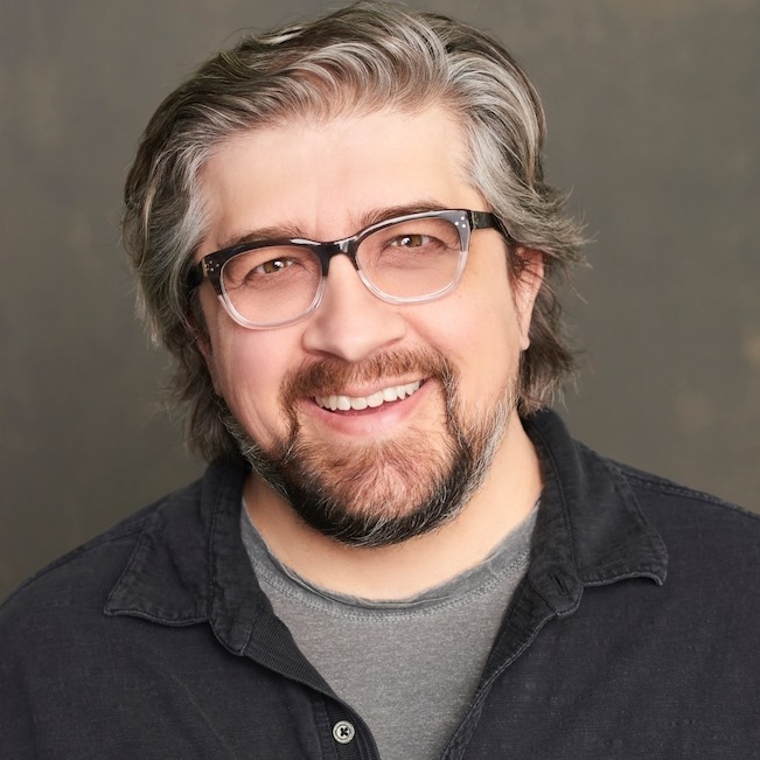
Animag: Congratulations on your fantastic new series. Can you tell us a little bit about the origins and inspirations for Kid Cosmic?
Craig McCracken: I wanted to create a show about this period in a kid’s life when they have this naïve confidence that whatever they want to do can happen. I remember when I was a kid, I used to draw comic strips and comic books and didn’t understand why I wasn’t ready to be published at 12. There was another period when I decided to start a t-shirt drawing business and I started drawing cartoon characters and band logos, so I put the word out in school. I thought I was going to have this business where I was going to make tons of money! I had this conviction it was going to work. When developing Kid Cosmic, I wanted to tap into this naïve confidence that all kids have. So, the show is about a kid who has this fantasy of being a hero and that opportunity literally lands at his feet. Would the fantasy play out the way it does in movies or comic-book scenes, or would the reality be much different? That was the basic inspiration.
I read somewhere that you had thought up this concept many years ago. Right?
Yes, I actually started thinking about this idea back in 2009, but the more I thought about it, I realized that this needed to be serialized. I can’t do random 11-minute or 22-minute cartoons with this. This character needs to grow and change, so I put it on the backburner. In recent years, as you know, more networks have been open to the idea of serialization in comic adaptations. So, Netflix came around, and I thought: this is something I’ve been wanting to do for years. I presented the idea to them, and they loved it. So we started production! I started thinking about it about five years ago, and we started with Netflix in early 2018.
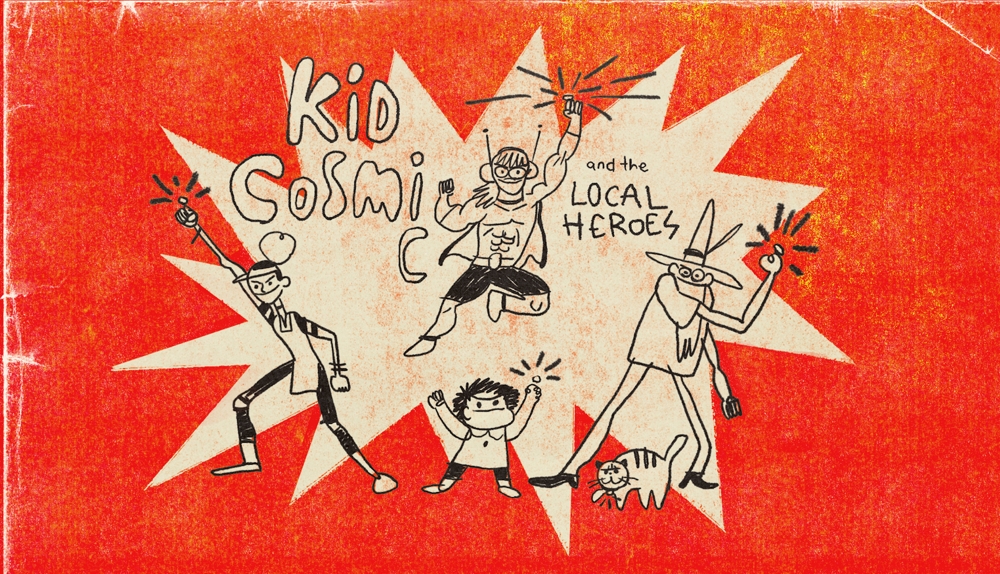
Was the show development experience at Netflix different from your previous work?
It was completely different from any of the other previous ways we had approached a new show. I was fortunate to have an animatic for the pilot. The way it worked I went in on a Thursday, and I showed it to Netflix. They called me back the next Wednesday to give me a tour of their future studio facilities. I asked them, “So what is the process for getting a greenlight here?” They said, “We love it. How about making a 10-episode, 22-minute, serialized show?” And I said, “Perfect!” It was really quick and quite an incredible experience!”
Who is your animation production partner on this show?
Mercury Filmworks in Ottawa is animating the show for us. They’re animating the show in Toon Boom Harmony. We have about 45 people in our Netflix Animation team in L.A., and the Mercury Filmworks side has about 110 members at a time. Each episode takes approximately a year and a half from writing start to finish. One of the great things about having 10 episodes to work on is that you can focus on making each episode unique and special, and you’re not churning out volume, which is an opportunity I’ve never had before.
I believe I saw your wife’s name (Lauren Faust) listed as character designer, too.
The thing about Lauren and I is that if you hire one of us, you get the other one for free! [laughs] As I was developing it, Lauren was always there going, here is an idea, oh, here’s an idea. So, she has been part of that and has helped out with some of the writing here and there, too.
Did your young daughter also help with the inspiration?
I think so. What’s interesting is that we have this four-year-old character Rosa on the show, and started writing her prior to having our daughter. As I was developing and writing it, I was noticing things that I got right and also things that I totally didn’t get right about how four-year olds actually are. Her energy and playful spirit are definitely there.
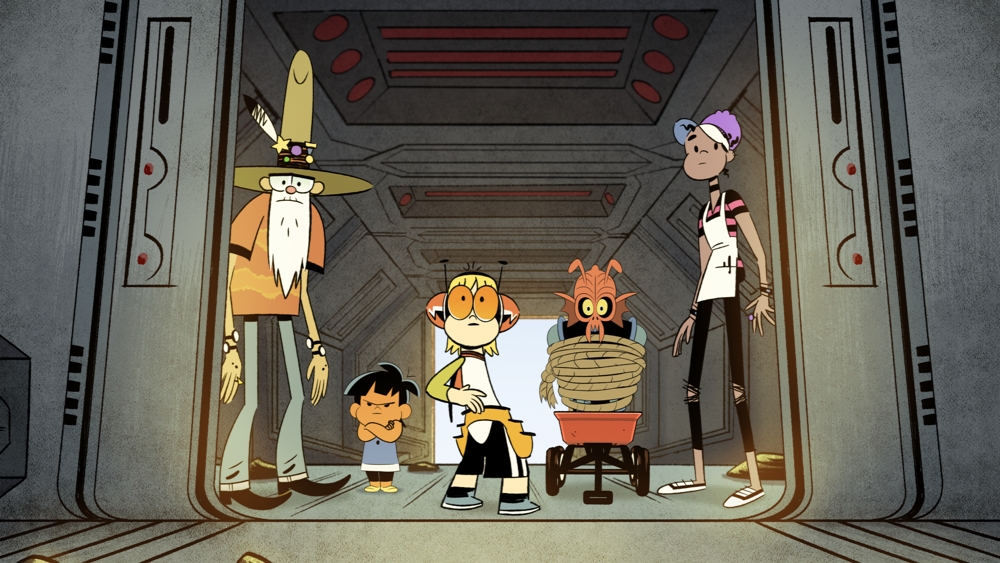
Can you discuss the lived-in, unique visuals of the show?
One of the things I wanted to focus on with the show was to have it grounded in reality. We came up with a design style that reflected that. I started looking at cartoonists that worked more in print media — people like Hank Ketchum (Dennis the Menace), Hergé (Tintin), they have a nice balance between being believable and also being cartoony. We aimed for that print, comic-book approach. Kid and his team are kind of like a punk rock superhero team, so we wanted to focus on a look that was a little bit rough around the edges and not hide the fact that these are drawings. So, for the backgrounds and the line work on the characters, we kind of left that textured, hand-drawn feel in there. We wanted to get across that human quality.
What prompted you to set the story in a desert town in New Mexico?
When I was a kid, my mom used to take me to the desert all the time, and I kind of fell in love with it. It is also rural enough that you can believe that a team of regular people can fight aliens there without everyone finding out. New Mexico is also synonymous with spaceship crashes, and it’s iconic. Another major reason is that it’s a production favor: You don’t have to do buildings and crowds, and can go with horizon lines and mountains and focus on the characters and the story.
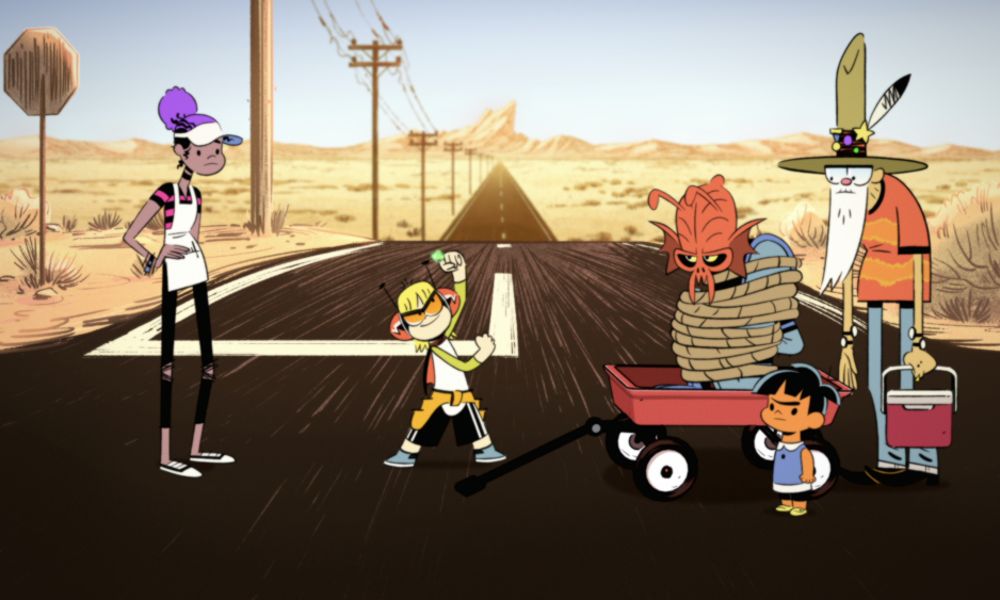
What would you say was the toughest part of the project?
The toughest part was doing the serialized aspect of it. When you do random 11-minute shows, each cartoon can stand on its own. But when you are telling one big story, it needs to feel like one piece. It needs to feel like it was written and directed by one person. That was a bit of a challenge to keep that unity in all 10 episodes of the season. When you’re doing a non-serialized show, you have that freedom to have a variety of tone, but with this show, it was a concerted effort to make it feel like a three hour and 20 minute movie broken up into chapters, conceived and written by one hand.
What was the best part of the experience?
I am just really proud of the freedom and trust that Netflix afforded us and that we pulled off what we wanted to do. It’s exactly the show I envisioned and wanted to make, and I’m very happy with the episodes, and super excited about kids finally getting to see it. It’s nice to have a project that I can just tell people, “It’s called Kid Cosmic and it’s on Netflix.” I don’t have to say, “It’s on Friday nights, or maybe they moved it to Monday.” With some of my other shows, the networks would shuffle the schedules around so it was hard to tell people when they were going to air. We’re all really, really proud of the work we’ve done on the show. I am working with my old friend Rob Renzetti, who is the co-exec producer on the show with me. It’s great to partner with someone I creatively trust and have known for about 30 years.
How did the pandemic and stay-at-home restrictions impact the production?
Since March we’ve all been working remotely from home. As far as executing the work, it really hasn’t changed anything. The quality of the work is maintained. What we miss is that before all of this, when we’d get a work print or final episode in, we’d all get together and watch it together. It was a collective feeling of satisfaction and completion. It has actually opened up opportunities to work with people from different places. My lead character designer lives in Canada, one of my storyboard artists lives in Mexico. That has been really nice.
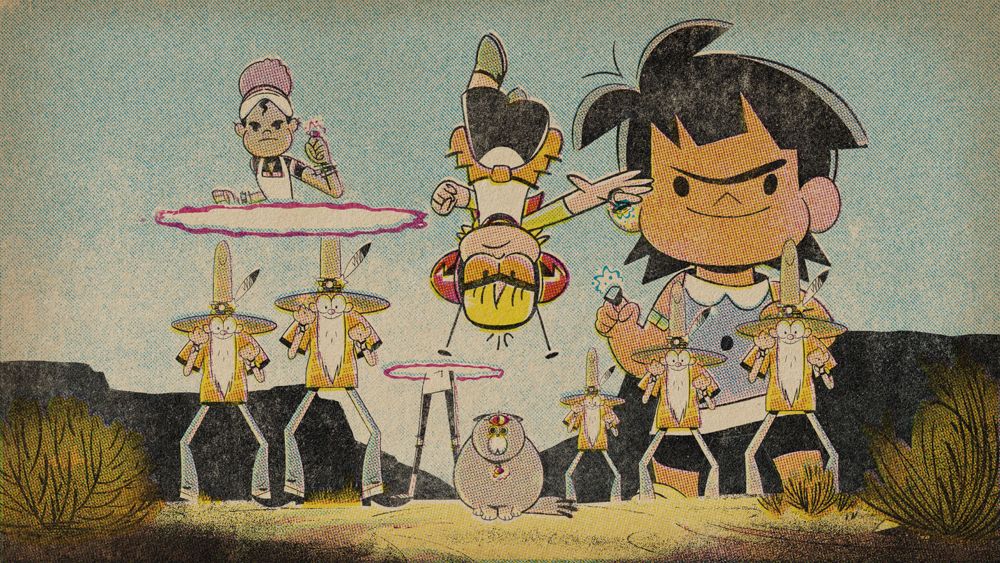
When did you decide you wanted to pursue a career in animation?
I started drawing when I was three or four years old. I was a big fan of Tintin and The Rocketeer and classic comic strips like Krazy Kat. (There is even a line in Kid Cosmic where one character is wandering in the desert just saying “Krazy Kat” repeatedly. That is my homage to the cartoonist George Herriman.) Back then, my dream job was to be a comic-strip artist. But by the time I was ready to get into that industry, it was really dying, so I gravitated towards animation. When I was 12, I didn’t know whether I wanted to work in print or animation, but I think when I was in high school and doing comic books and comic strips, I found that I wanted to add music to them. I would come up with a joke that was based on timing or the way a line was said. That’s when I realized that the way my imagination was working, I wanted to be more of a filmmaker and to work in animation. So I applied to CalArts right out of high school and got in.
You’ve seen the animation industry change a lot in the past few decades. What is your take on the state of the business as we embark on a new year?
I am really excited about the work that is being produced at Netflix, which is unlike anything I’ve seen: They really put a lot of trust and freedom in all their creators. Every project I have seen come through is so different from each other and also so different from what you’d see from another studio. I am really excited about what is going to come out in the years ahead. I think people are going to be surprised by the variety of content and the different voices that are given the opportunity to tell their stories. I think it will be really good for the industry and show people what you can do when you trust creative people to realize their vision. I hope it forces other studios and people to try that, too. Streaming still feels like a new frontier. It reminds me of the time I first started at Cartoon Network: Those were the early days of basic cable. We didn’t even get lavatories in the building back then!
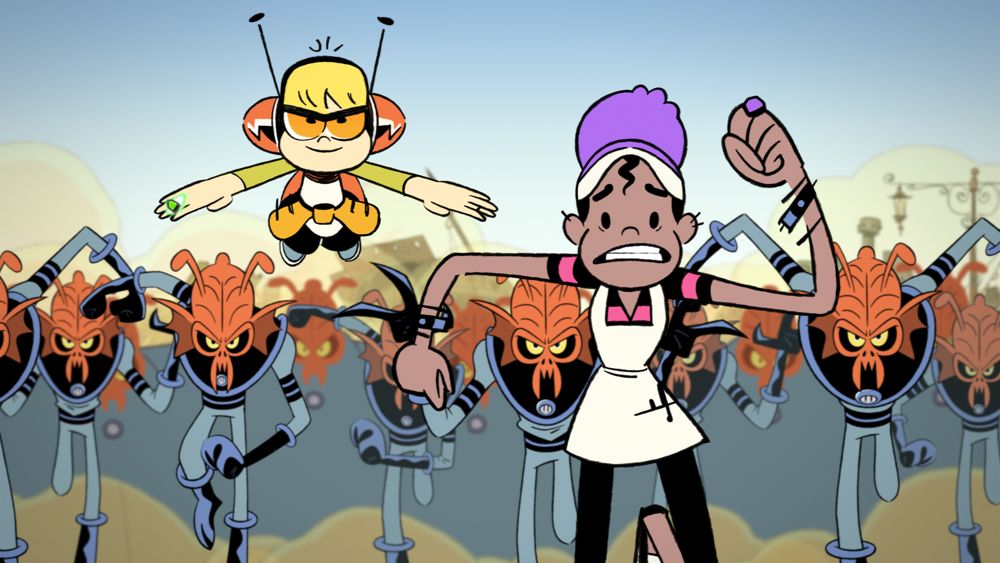
What advice do you give young people who want to create their own shows?
Find your voice. Figure out what you want to do and produce it. Right now there are so many opportunities for people to get their work out on the internet. I always tell people: focus on what you want to say and who you want to be as an artist and stick to that. If you can, before you do your own show, try to get a job in the industry. Getting your foot in the door and working on a production teaches you so much about how the business works, what is required of a showrunner, etc. In my own personal experience, working on four seasons of Dexter’s Laboratory made The Powerpuff Girls that much better. I had that idea when we were making Dexter’s, but I wasn’t ready to make that show until I had some time on another production.
What do you hope audiences will take away from Kid Cosmic?
I hope they relate to Kid and see a real story about real people. The series is about what it really means to be a hero. We focus less on the powers and more on the people. Here is a real kid with authentic experience — he has a range of emotions, he gets angry, frustrated, he struggles. I hope audiences will love these characters and want to spend time with them. I just want them to have a good time watching our show.
Kid Cosmic premieres on Netflix on February 2.



